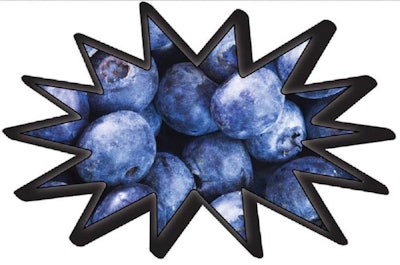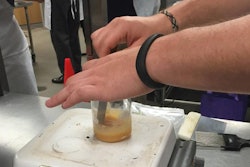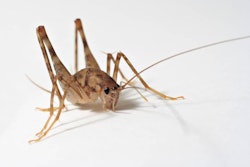
The ingredients list on the cat food bag sitting in my kitchen reads like something out of a foodie’s dreams, with foods like peas, salmon, flaxseed, sweet potatoes, alfalfa, blueberries and cranberries. Often falling under the category of so-called superfoods, their use in pet foods and treats is not all that new or revolutionary; ingredients such as these and pumpkin, kale and chia seeds have been appearing on pet food labels for at least a few years now and are especially popular in premium and superpremium products, including pet treats.
That’s because pet food makers the world over understand that the pet owners driving real, continued growth in the market, particularly highly involved pet parents, who also often enjoy higher incomes, increasingly seek to feed their furry family members similarly to how they feed their human ones. Which means searching for the same ingredients on pet food labels that they look for in their own food—and more and more, superfoods fit that bill.
New research from Mintel’s Global New Products Database shows a whopping 202% rise in the number of new human food and beverage products launched globally between 2011 and 2015 that included the terms “superfood,” “superfruit” or “supergrain.” Last year alone saw a 36% increase in such product launches.
While “superfood” and similar claims are essentially marketing terms used to describe foods (typically whole, natural ones) that are supposedly nutrient dense, there is no official or regulatory definition for the terms, under any regulatory body worldwide. “Generally speaking, superfoods refer to foods—especially fruits and vegetables—whose nutrient content confers a health benefit above that of other foods,” reads an article by the European Food Information Council (EUFIC).
Scientific research backing the claims surrounding superfoods is limited to just a few of the foods that usually fall into this category, and the studies themselves are often limited. “At first glance, they appear to lend weight to the existence of certain superfoods—certainly, the nutrients in these foods have been shown to have several health-promoting properties. But a closer look reveals the difficulty in applying the results of these studies to real diets,” the EUFIC article says. “This is because the conditions under which foods are studied in the lab are often very different to the way these foods are normally consumed by people in their everyday lives.
“One major characteristic of research in this area is that very high levels of nutrients tend to be used,” the article continues. “These are usually not realistically attainable in the context of a normal diet. On top of this, the physiological effects of many of these foods are often short-term.”
Seeking natural nutrition
Yet, as with human foods labeled natural—another term that has no official or regulatory definition, at least in the US—consumers are still drawn to labels touting superfoods. Mintel ties this to the strong consumer demand for highly nutritious products in general. For example, 73% of Italian consumers, 72% of French and Spanish shoppers, and 71% of German consumers believe that health-promoting benefits of natural foods (such as fruits and vegetables) are preferable to the benefits of functional additives.
Similarly, in the US, among consumers who prefer to purchase food products with “free from” claims (promoting what the foods do not include), 84% say they buy those products because they are looking for more natural or less processed food, according to previous Mintel research.
Granted, superfoods are mainly a phenomenon in developed markets. Most of the superfood and “superdrink” launches in 2015 occurred in the US, with 30% of all new superfood products globally, followed by Australia (10%), Germany (7%), the UK and Canada (6% each).
And, it’s not limited to just fruits and vegetables but has also expanded to ancient grains and pulses. “Between 2014 and 2015, there was a 70% increase in the percentage of food and drink products launched containing chia, while launches of food and drink products containing teff rose by 31%,” Mintel said. “Meanwhile, the number of food and drink products containing quinoa rose by 27%.” In addition, 30% of UK consumers say they think pasta made with ancient grains is healthier than regular pasta, and 41% of US consumers have eaten ancient grain-based cereals.
While the United Nations has declared 2016 as the year of the pulse, pulses have been used in pet food for some time now, particularly in grain-free products, and are certainly making their mark in human food, too. Over the past two years, food and drink product launches containing green split peas have increased 126%, while ones with coral lentils have grown 62% and products containing yellow split peas have risen 21%, according to Mintel.
Chia seeds, which we’ve seen appear increasingly in pet treats, are also on the rise in human foods. The number of food and drink products with chia seeds has grown 70% globally over the past two years, ones with pumpkin seeds have risen 27% and products with sunflower seeds have increased 22%.
Despite the lack of definition, regulation or in-depth research backing superfoods, they seem destined to capture the imagination, appetite and wallets of more and more consumers, especially in developed markets. This will likely continue to be as true for pet food as for human food.















